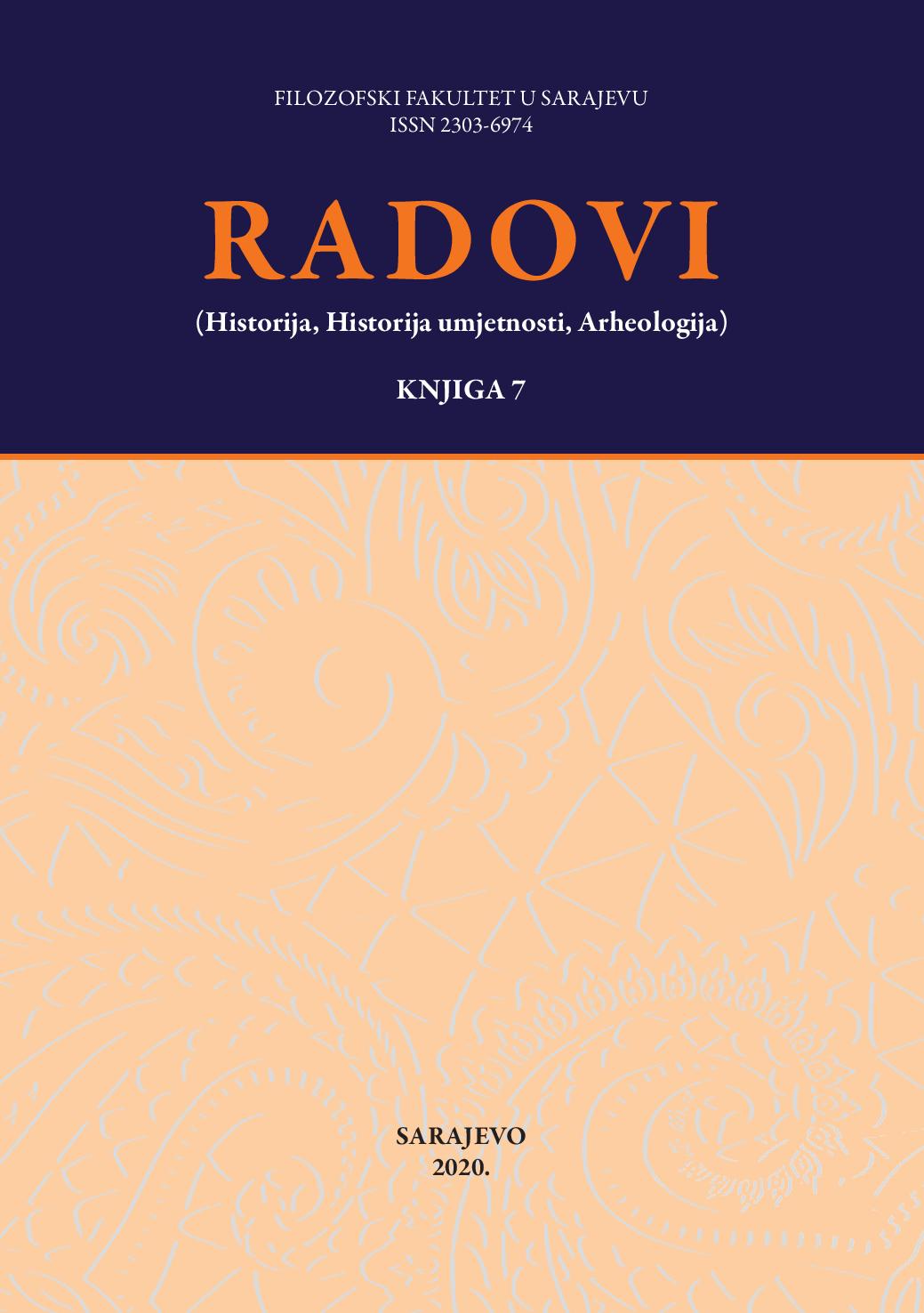Carska ideologija i njene kasnije izvedenice sa sarajevskim primjerima afirmiranja, negiranja i kopiranja u procesima izgradnje kolektivnih identiteta od kraja XIX stoljeća do danas
Imperial Ideology and its later Derivatives in the Processes of Collective Identity Building since the end of the 19th Century to the Present with Examples of Affrimation, negation and copying in Sarajevo
Author(s): Amer Sulejmanagić, Amra ČustoSubject(s): Cultural history, Ethnohistory, Local History / Microhistory, The Ottoman Empire, Identity of Collectives
Published by: Filozofski fakultet Univerziteta u Sarajevu
Keywords: Empire;Bosnia and Herzegovina; Sarajevo; coats of arms; monuments; collective identity; regime change;
Summary/Abstract: The topic of the paper is the modern method of identity–building that emerges in Bosnia and Herzegovina with the advent of the Dual Monarchy and is expressed through the emperor and dynasty, ceremonies, monuments, lands coats of arms and flags while promoting land identity; as well as the fate of these building elements in the regimes that followed. It starts with the idea, philosophy, theory and mystical–religious aspect of the Empire; ideology of imperial legitimacy; dynastic ideology and Habsburg mission, and comes to the functioning imaginary community united in an emperor with politically limited power embodied in a multiplicity of homelands; the Emperor with his lands and his peoples. The transformation of the Empire are followed, the development, the appropriation of the idea, the dissolution, rebirth, confrontation of national problems and the practices of their solving to the destruction of the Empire and its consequences which were tried to be justified with the creation of the myth of the dungeon of nations and eventually the revitalization of the imperial heritage as the idea of Central Europe. Bosnia (and Herzegovina)has been followed in the orbit of empires since the earliest ceremonial testimonies, through the establishment of a new of ceremonial paradigm through the artistic, sculptural and heraldic affirmation of imperial ideology with the advent of the Dual Monarchy and the revival of old Bosnian symbols. Within this, it is indicated to the apparent conflict between political and ceremonial, and to the relationship of Bosnia and Herzegovina and Bosniaks (of that time) to the Empire until the very end. After the Empire, in the three–tribe kingdom and the socialist federation, the oldvessels contain new contents, and the usage of imperial, formally negated, paradigm was continued by the Karadjordjevic dynasty and Tito, by taking over the imperial ceremonies in altered forms through new art, sculpture and heraldry enriched with completely new inventions, the until then unknown term peoples coat of arms and un heraldic socialist heraldry. Yugoslavia, by its multinationality, was very similar to the Dual Monarchy, and because of its successful management, Tito deserved the epithet of the last Habsburg. The notion of the emperor and his peoples is on the ideological plane replaced with the relationship without intermediary between the leader and the people, for which King Alexander, introduced the dictatorship as a formal justification, but the Tito officially did not. The loyalty to the leaders is shown by the people by the mass manifestations of bearing a torch or a baton. During this period, the artistic, sculptural and heraldic legacies of every previous regime were thoroughly destroyed, so the land coat of arms survived only in traces in the Land capital till today, and not so much of sculptures and paintings. In 1946.Bosnia and Herzegovina got a new flag, coat of arms and constitution. While the flag does not even have any of Bosnian herzegovinian symbols and indicates that it is subjected to and under the protection of Yugoslavia, one of the coat of arms proposals tried to give the breath of new life into the old land coat of arms, and the constitution itself insisted on the pattern of peoples as land subjects from the imperial era. Bosnia and Herzegovina was the remnant of the empire. The Constitutions that followed the one from 1946. adopted the ZAVNOBIH matrix and abandoned the one of land people. With the death of the people and the triumph of the nations and return to the millet system of an previous empire; the territorialization of nations came in exactly the same way as it did in the countries of Central and Southeastern Europe after the collapse of the Dual Monarchy. It was the final farewell of our country to its imperial heritage. The relationship to the order of remembrance, heraldic and sculptural heritage, as well as their treatment through the changing regimes that followed the imperial, continued in a new society without ideology; it had not much left to destroy; only one coat of arms of the Socialist Republic of Bosnia and Herzegovina.
Journal: Radovi: Historija, historija umjetnosti, arheologija
- Issue Year: 7/2020
- Issue No: 1
- Page Range: 97-134
- Page Count: 38
- Language: Bosnian

